Our team delivers bespoke solutions across all areas of contact centre operations, including leadership, business transformation, technology, project management, and analytics.
We have worked with clients in financial services, healthcare, outsourcing, media, and non-profits to drive efficiency, enhance customer experiences, and achieve sustainable commercial growth. With a hands-on approach, we tailor strategies to each client’s unique challenges, ensuring measurable and lasting impact.

We design and deliver low effort, high satisfaction customer experiences.
View Case StudyLeveraging technology to improve processes, increase efficiency and deliver better customer and colleague experiences.
View Case Study

Designing and delivering colleague experiences that deepen loyalty and increase tenure.
View Case StudyCreating and implementing efficient processes that streamline workforce planning, operational change and customer interactions.
View Case Study

Enabling stakeholders to gain actionable insights from customer interactions to drive commercial improvements.
View Case StudyUsing disparate telephony systems, a contact centre with over 300 employees presented Richard with an opportunity to deliver a consolidated cloud-based telephony platform across its network of 30+ operational sites. The organisation knew that the service they were offering their customers needed to be improved, as it was a vital part of the business strategy moving forward, but due to a lack of knowledge and the differing business models and cultures at various sites, they were unsure how to fix this.
After an initial review and understanding of the various operating models and challenges at sites, Richard worked and consulted with the central business operation using his experiences in this field to identify the best fit solution. This solution would not only address the challenges the organisation faced today but also provide opportunity for tomorrow, securing a telephony platform that catered for future growth and opportunities in an evolving business sector.
Once the plan was developed and approved Richard created engaging alliances within the organisation that supported the implementation, whilst recognising the need to foster a positive and well-informed culture amongst various stakeholders, that would drive its successful implementation and launch.
Covering the operational build, testing, training, processes, communication, and analytical data dashboards to measure return on investment, the project was delivered within timescales and budget, leaving a legacy for future enhancements and expansion.
The outcomes included the availability and access to operational data that could be used to monitor and improve operational optimisation and customer experience, along with analytical dashboards to manage performance and identify opportunities.
Additionally, there was a reduction in telephone numbers across a vast business network, resulting in an improved customer experience as customers were directed through a compliant and uniformed IVR solution, providing a consistent customer experience at every site.
The provided solution enabled the expansion of CX and operational efficiency through additional omni-channel capabilities and identified opportunities, whilst also allowing for workforce management under one telephony platform, enabling multiskilling opportunities across various products.
An improved IT support network was also delivered due to one technical solution serving multiple sites, thus enhancing continuity of platform performance.
Effective communication between customers and the organisation is critical for enhancing customer experience, as well as enabling organisations to efficiently complete tasks, identify trends, and manage operational output. One organisation Andrea worked with faced an increasing issue where customers were presented with a confusing array of channels and email addresses to communicate with the contact centre. This led to inconsistent handling of queries, with agents often opting for quicker resolutions over more complex and higher-priority cases.
This inefficiency resulted in a backlog of 25,000 complex cases that fell out of the organisation's service level agreements, causing increased telephony activity from customers following up on their initial inquiries. Consequently, the contact centre experienced low service levels, inefficient workforce utilisation, and high customer churn due to poor service experiences.
Andrea and her team were tasked with reviewing this issue and implementing changes aimed at improving customer experience, reducing churn, and enhancing workforce efficiency.
Following an initial review, Andrea proposed a streamlined approach, advocating for the removal of multiple email addresses and encouraging customers to use a standardised webform for their communications. This allowed the cases to be routed to skill-based advisors appropriately prepared to manage them.
The implementation of these changes yielded significant benefits. Customer experience improved, reflected in the Net Promoter Score (NPS) increase from -17 to +30. The skill-based routing system facilitated the efficient resolution of the 25,000-case backlog by matching cases with advisors possessing the relevant knowledge and systems. Additionally, new data availability enabled performance tracking, target setting, and enhanced planning through better analysis.
In the long term, the visibility of data allowed the organisation to identify common issues, creating a robust knowledge base that standardised responses and facilitated the identification and resolution of ongoing or emerging issues within the business. This transformation elevated the Contact Centre into a key outlet for superior customer service, while also providing valuable root cause analysis that informed future funding allocations to improve customer-focused areas of the business.
Andrea has worked in leadership positions throughout her career, and has been responsible for new site set ups and relocations, site closures and business transformations. While new sites set ups give the ability to create a desired culture from the outset, business transformations can require a full culture reset, which can naturally be harder to deliver.
One such transformation required a full employee value proposition review and redesign, from pre-hire strategy development through recruitment, onboarding, training, development through defined career pathways and internal and external redeployment. The starting point for this programme was an annualized attrition rate in excess of 60%, and a colleague overall satisfaction score of less than 70%.
Highlights of the cultural transformation Andrea delivered included the introduction of a career pathways programme – allowing colleagues the flexibility to increase their skillset, and with it their base salary - in line with the additional value they delivered - at a pace that suited them. During the transition process emphasis was placed upon creating an environment in which all colleagues felt safe, respected and valued, with specific leadership training focused on creating an inclusive environment and overcoming bias. Outdated management practices such as probationary periods and performance management processes were overhauled in favour of treating colleagues as individuals and leading for success, rather than measuring failure.
Following the full implementation, annualized attrition was reduced to 17% and colleague overall satisfaction increased to 88%, (both measurements taken at 12 months post delivery) with average tenure increasing to >3 years – resulting in significant cost savings from reduced recruitment, improved productivity and customer outcomes through enhanced colleague experience and increased retention.
Following a wider organisational change strategy aimed at streamlining business operations, an organisation with which Richard closely worked decided to relocate two contact centre sites and merge them into a new, separate site, unifying services under one operation. These contact centres had vastly different experiences in terms of culture, history, and processes within the overall organisation. One, situated near the head office, benefited from a stronger company identity, investment, and greater opportunities, while a satellite call centre located further away experienced limited investment, differing technology, processes, and a distinct internal culture.
Due to budget constraints as the organisation was committed to funding other key business initiatives, the focus, with both sites deemed key revenue generators, would be heavily influenced in combining technologies and processes under the unified site with a view to mitigating operational down time during the relocation. As a result, the change process that was adopted by the project team was a top-down model of change, familiar to organisations influenced by these factors that had a linear sequence of steps throughout its strategy.
The relocation site, being closer to the central head office, was viewed as a significant step towards unifying both operations in a familiar environment. However, within the first months of the project, it became evident that the initial momentum was in decline, making it challenging to consolidate and reflect on progress. Employees reverted to traditional processes to which they were accustomed. Suggestions from stakeholders at the sites during initial phases faced difficulties to incorporate due to the prescriptive top-down approach, strict funding boundaries, and ROI considerations, leading to disengagement and resistance among employees who grew disillusioned with the change. Additionally, the reaction from the traditionally integrated site was underestimated, what was considered a more BAU change saw a reaction of anxiety within the workforce to the change of their normal and established routines. This was also mirrored within the satellite operation, resulting in a reduction in operational performance.
Drawing from his previous experience and his studies in strategic business change during his MBA, Richard was approached to provide direction to mitigate the adverse effects. Richard recognized the need for early quick wins to reenergise the project. He introduced a BAU management team and a sub-change team to work alongside the main project team, maintaining the top-down approach's integrity while fostering engagement and encouraging innovative ideas from those involved in the processes, who would see their contributions both considered and actioned where applicable.
Through his experience and studies, Richard identified that effective change required acknowledging that everyone is part of the change process and would have unique experiences within that. In line with this, he introduced a secondary change model that overlaid the strategic change model. This additional model allowed for holistic monitoring throughout the change process, recognising and celebrating short-term successes. While still accounting for the strategy, structure, processes, and systems of the initial model, the secondary model also considered people, leadership, management adaptability, and the behavioural aspects of the change.
As a result, the inevitable challenges of such a large change were seen as opportunities for the workforce to engage and present innovative ideas. Crucially the project regained its initial momentum, both delivering on time and with minimal disruption to productivity, cultivating long-lasting processes that remain integral to the contact centres operation to this day.
An organisation that Richard worked with identified an issue through increasing customer complaints and declining customer satisfaction scores, indicating that customers were experiencing difficulties contacting them via telephone across their multisite operation. The affected calls involved sales bookings and customer service product queries, which were crucial sources of revenue that needed to be addressed by the business. Without cohesive and meaningful management information, the organisation had difficulty pinpointing the root cause of the problem.
Richard and his team were engaged to review the issue, identify the root cause, and facilitate a solution to address the immediate problem while also improving the service provided.
After a comprehensive review of the data and subsequent analysis, it was determined that approximately 45% of customers were unable to make direct contact through the existing telephony system, leading to call abandonments due to wait times of around 15 minutes. This situation resulted in lost revenue and missed customer service opportunities for the business.
Using the data and analysis, Richard and his team developed a case study to secure the necessary funding for both tactical and strategic solutions. Once approved, they developed a detailed plan that initially involved redesigning the telephony network across the multisite operation. The existing network had multiple legacy solutions and telephone numbers, creating a confusing customer journey, and making it difficult for the organisation to manage effectively. Concurrently, Richard and his team implemented a new workforce management model that accounted for call arrival patterns, ensuring appropriate levels of workforce coverage to meet demand. Additionally, the team redesigned the BI platform and dashboards to enable the business to monitor and capture activity and opportunities moving forward.
As part of the solution, an overflow of call centre staff based centrally within the organisation was created to manage calls during peak periods. This measure accounted for macro events that triggered call volumes beyond the scope of the basic workforce plan.
With the accumulation of rich data and significant reductions in call abandonment (down to 6% across the organisation's network), Richard and his team identified additional technological capabilities within the telephony platform to further manage call flow. By implementing virtual hold queues and advanced omni-channel options, they reduced call abandonment rates to the target of 3%, enhancing customer satisfaction and workforce efficiency within the contact centres.
Copyright © 2025 Synergetic Solutions - All Rights Reserved. Privacy Policy
